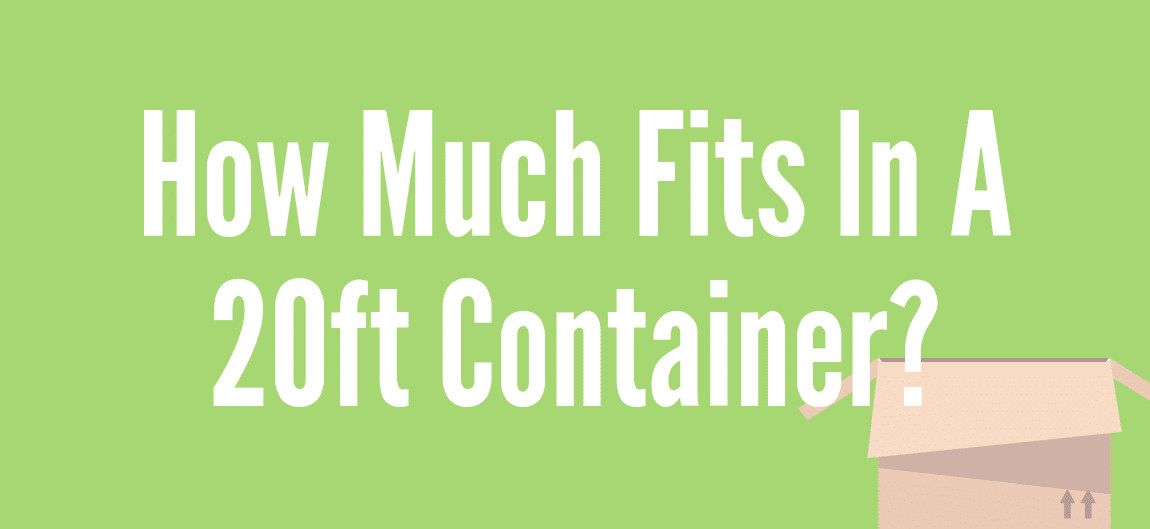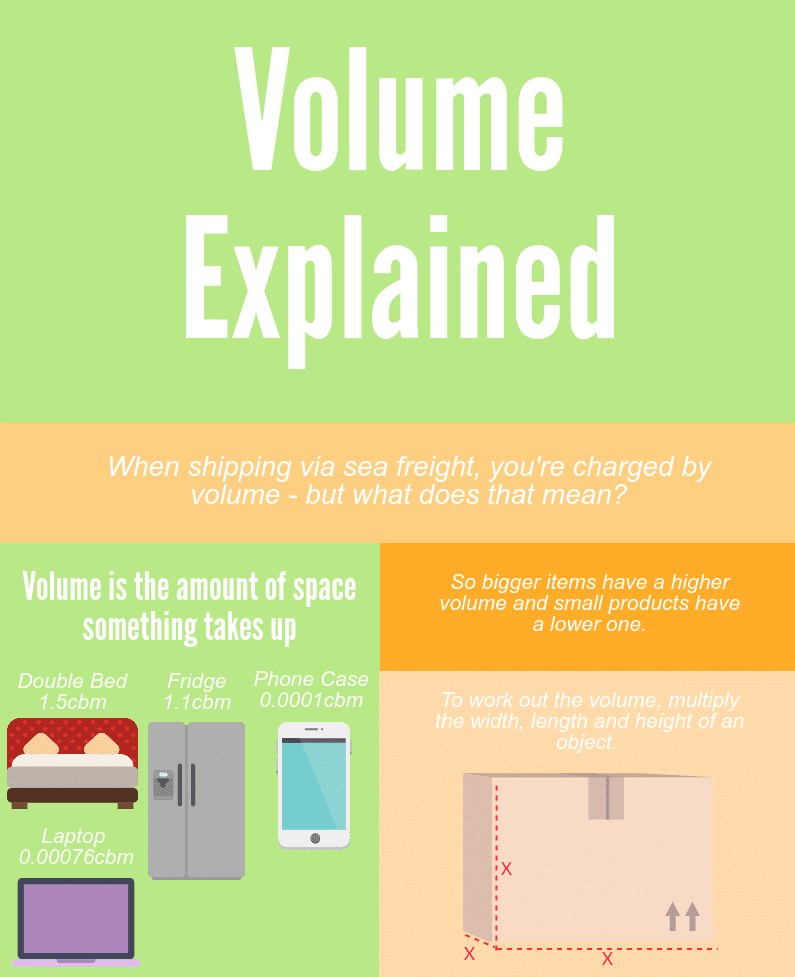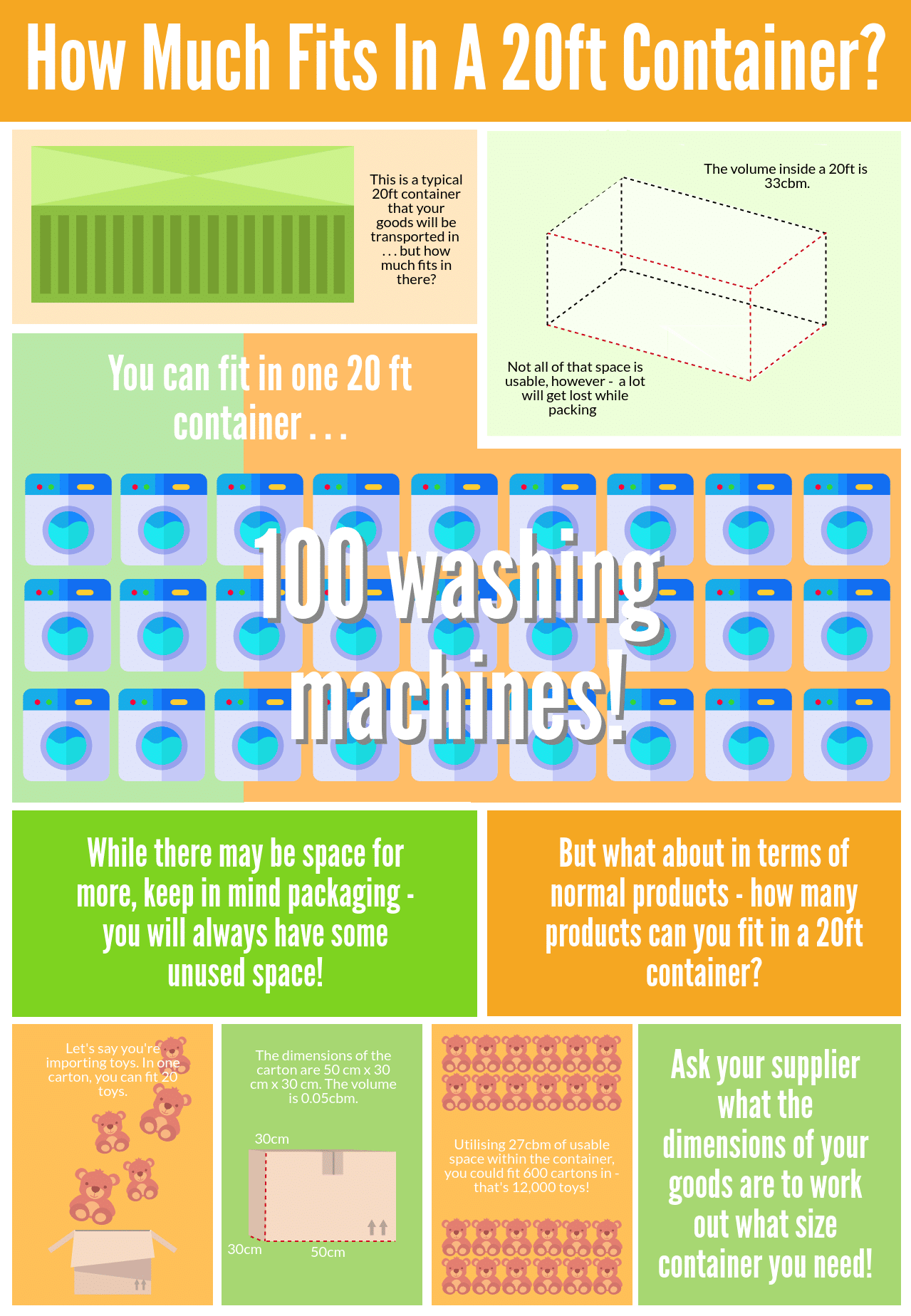This content was reviewed for accuracy on 04/08/2023
Here at Shippo, we specialise in sea freight – and one of the most crucial parts of sea freight is the volume of goods your importing. This dictates whether it’s more cost-efficient for you to ship a 20ft container (or 40ft) or whether you’d be better off on LCL – that’s if sea freight is even an option for you! Sometimes a courier, or air freight, can be cheaper if you’re volume is too low.
That said, volume is such a critical part of the process. Volume is not something that tends to come up in everyday life; however, when people don’t have their exact measurements yet and are looking for a quote, wildly inaccurate guesses can completely skew their prices. Why? Because your shipment’s measurements dictate your shipping cost.
We’re here to try to help you understand volume in the context of sea freight – by talking you through the capacity a 20ft container has and whether you need one.
-
What is volume – why is it important when shipping?
First of all, let’s get the basics of volume down:
Volume is the amount of space something takes up – and it’s what your sea freight rate is calculated by.
*Make sure your units are right! If you’re working out cbm (cubic meters) make sure you’re using meters in your calculations.
Shipping via sea freight, your goods are packaged into containers. These containers come in different sizes (20ft, 40ft, 40ft High Cube); depending on how much you’re importing, your shipping company will advise the best option for you. When you rent a container, you pay a flat fee for the container and have access to all the space inside. Volume can be measured in multiple different units, but for sea freight we typically use Cubic Meters (cbm).
However, this isn’t the only reason that volume is important in shipping; sometimes, you may not be shipping enough to warrant use of a full container, so knowing the volume of your goods allows you to get an LCL (less than container load) quote. Shipping via LCL, you are charged per cbm of space that you use; to provide you with an accurate quote, we need to know the exact volume of your goods.
-
Working out the volume of multiple cartons
Importing stock, you’re likely to be importing more than one carton; so how do you work out the volume of all of multiple cartons?
To find the volume of a shipment of 100 cartons, you have to multiply either the total volume of a single carton by 100 or multiply one of the dimensions (not all of them!) by 100 before multiplying them together:
Volume of 100ctns each 30cm x 40cm x 50cm = 100 x (30 x 40 x 50)
Don’t make the mistake that a lot of people make! It’s not 30×100 + 40×100 + 50×100.
-
How much fits in a 20ft container?
In a 20ft container, you typically have between 25-28cbm of usable space the actual volume of a 20ft is 33cbm, but packaging means that some of this space isn’t usable. Understandably, saying “25cbm” to most people doesn’t mean much. How much fits in 25cbm? Is it a lot? Enough for all your goods? Let’s take a look!
As you can see from the infographic, 20ft containers can carry a lot of goods.
-
What if I don’t have enough goods to fill a 20ft container?
Considering how much space is in a container, naturally some people will not be importing enough to fill it. If you have small items, such as phone cases or T-Shirts, then it becomes even harder – but this doesn’t mean that you can’t benefit from the savings of sea freight. As we’ve previously mentioned, you can utilise LCL shipping.
LCL shipping is when multiple importers transport their goods in one container; if you’re only importing a small volume, you can share the space with other importers. This means that, instead of paying for the entire container, you only pay for the space within the container that you use.
Anything over around 20cbm will be best to be shipped via FCL as the cost via LCL will likely be more so it may be worth having the added protection of your goods only being handled by you and your supplier (please see LCL vs FCL for more details).
Hopefully, this post helped you to understand a bit more about volume in shipping! If you are looking to import to the UK, we’re experts with both full-containers and LCL (less than container load) shipments; feel free to contact us for more information or grab a free quote.


